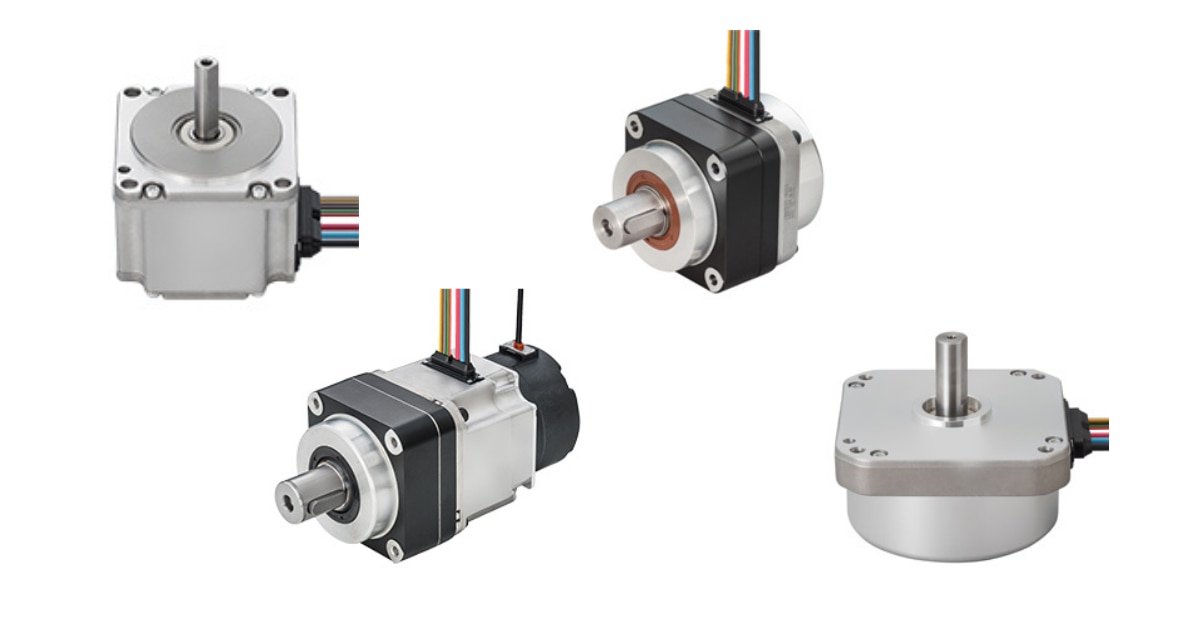
Explanations of Motor Mechanisms and related Terminology
Motors running on electrical energy are used in various devices as a source of power and are indispensable to our daily lives.
However, surprisingly few people are aware of how they work. Since there are many types of motors, it is important to understand their mechanism to choose the right product for your application.
Therefore, this article provides a simple explanation of the basic structure of motors and their development history.
contents[非表示]
What is a Motor?
A motor is a driving device that converts electrical energy into rotational force.
Their application fields are wide-ranging, and they are used in a variety of devices, from ventilators and washing machines to robots. Motors are also indispensable for electric vehicles, which have been attracting a lot of attention in recent years.
Motors come in a broad variety of sizes and types and are used throughout our daily lives. The number of motors in use in Japan, including those for households, commercial, and industrial use, is substantial. Their annual power consumption is said to account for more than half of the total power consumption in Japan.
Basic Motor Mechanism
How exactly does a motor work?
A motor rotates by utilizing the forces of attraction and repulsion between an electromagnet, whose poles are switched according to the direction of the electric current, and permanent magnets arranged around it.
▼Basic Mechanism of Motor
- Generating of a Magnetic Field
- Generating of an Electromagnetic Force
- Rotation by Electromagnetic Force
- Maintaining Rotation
For a detailed explanation of electromagnetic forces, see the following page:
The Basics of Electromagnetic Forces
Motor History
Motors, which are now used in a wide range of situations, have a long history.
During the Industrial Revolution of the late 18th and early 19th centuries, the British scientist Michael Faraday discovered the principle of the motor. The "Law of Electromagnetic Induction" proposed at that time remains an essential concept applied to motors.
In the 1880s, the implementation of motors accelerated. Nikola Tesla invented the AC motor in the U.S., and its large-scale industrial use began. During this period, John Fleming of England published "Fleming's Right-Hand Rule," which is still used today as a means of explaining the principles of electromagnetic induction.
Since the commercialization and widespread use around the world, motors have become indispensable. It is expected that motors will continue to be utilized as a source of power as technology advances.
Motor Types
There are two main types of motors. DC motors operate on a DC power source, and AC motors operate on an AC power source.
▼Types of motor
- DC (direct current) motor
- AC (alternating current) motor
DC motors are used for automotive parts and cooling fans because of their simple structure and stable high-speed rotation. AC motors, on the other hand, have no brushes among their components, making them highly durable, so they are widely used in ventilators and drying machines.
DC motors and AC motors come in a large number of models, and there are even more detailed classifications. When selecting a motor, it is important to choose the appropriate type for your application.
At Mabuchi Motor, our representatives will support you in your purchase, so that even first-time buyers can use our products with confidence.
Terms related to Motors
In this last chapter, basic terms related to motors will be explained. Once you learn the meanings of the terms, you will have a better understanding of how motors work.
(1) Magnetic Field
The space where the magnetic force of a magnet occurs is called a magnetic field. Magnetic fields are present in many of our everyday objects, such as electrical cords and home appliances.
Magnetic fields have a direction, and if you use a compass to check where the N pole is, that would be the direction of the magnetic field at this point.
(2) Electromagnetic Induction
Electromagnetic induction is a phenomenon in which an electric current flows when a coil or other conductor is moved in a magnetic field.
The driving force of the current generated by electromagnetic induction is called "electromotive force," and its strength varies depending on the speed and magnetic force that moves the magnet. The direction of the magnetic field, conductor motion, and electromotive force in electromagnetic induction can be visualized by using Fleming's right-hand rule.
(3) Permanent Magnet
Once magnetized, a permanent magnet maintains its magnetic force for a long period of time. Permanent magnets have N and S poles, and these two repel each other.
The permanent magnet in a motor is called the stator, which surrounds the rotor.
(4) Electromagnet
In contrast to permanent magnets, which maintain their magnetic force, electromagnets possess magnetic force only while an electric current is flowing.
Although it varies depending on the type of motor, a rotor with a coil (winding) attached to its periphery is an example of this type of motor. Rotation of the motor is caused by the interaction of the electromagnetic force generated when an electric current flows through the coil and the magnetic field of the permanent magnet.
Summary
This article explained the following about how motors work:
- What is a Motor?
- Basic Motor Mechanism
- Motor History
- Motor Types
- Terms related to Motors
Motors are widespread in considerable numbers also in Japan and have become indispensable in our daily lives. From ventilators and washing machines to robots, there is a wide variety of devices that require motors. Since there are many types of motors, it is important to select the appropriate product for your application.
Mabuchi Motor offers a wide variety of products, including brushless motors that are compact and energy efficient. Our representatives will support you in your purchase, so that even first-time buyers can use our products with confidence.
If you are interested in our products, please feel free to contact us.




